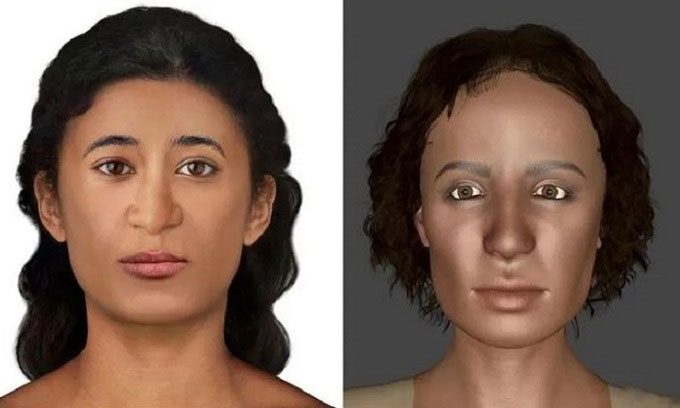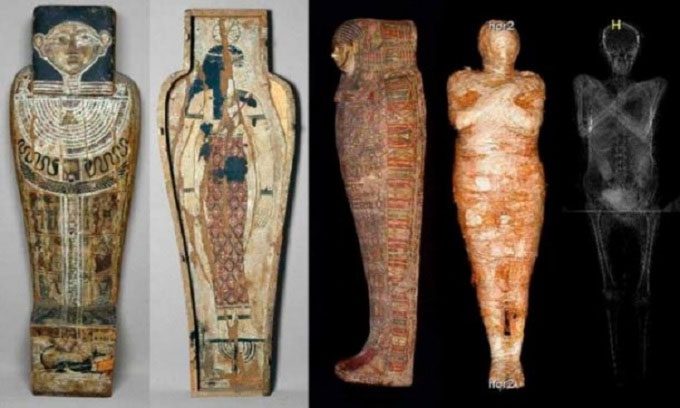Forensic scientists reconstruct the face of a 28-week pregnant Egyptian woman who died 2,000 years ago.

Two reconstructed facial versions of the ancient pregnant woman. (Photo: Chantal Milani)
Known as the “Mysterious Lady,” the mummy of the world’s first pregnant woman was analyzed last year by a research team in Poland. They also discovered a fetus in the mummy’s womb and believe the woman died about 2,000 years ago while she was 28 weeks pregnant. It is likely that the woman was between 20 to 30 years old. Experts used the skull of the mummy to create two images revealing the portrait of the woman when she was alive in the 1st century BC, according to Ancient Origins on November 11.
According to Chantal Milani, a forensic anthropologist in Italy and a member of the Warsaw Mummy Project, human bones, especially the skull, provide a wealth of information about an individual’s face. Like many other anatomical parts, the skull is unique, showing a range of size and shape ratios on the face. The most important factor is reconstructing the thickness of soft tissue at various points on the skull’s surface. To carry out the project, Milani and her colleagues at the University of Warsaw used statistical data from various populations around the world.
Collaborating with two forensic specialists, the research team aimed to recreate the mummy’s face using both 2D and 3D techniques. They displayed the reconstruction results at an exhibition at the Silesia Museum in Katowice on November 3.

The sarcophagus containing the mummy and scan image. (Photo: Archaeological Science Journal)
The Mysterious Lady was found in a royal tomb in Thebes, Upper Egypt, and belonged to the upper class. Researchers discovered the mummy in the early 19th century and dated the remains to the 1st century BC, during the reign of Queen Cleopatra when Thebes was thriving. The mummy was transferred to Warsaw in December 1986.
Initially, researchers believed it was the remains of the priest Hor-Jehuti, but in 2016, the research team concluded that this was a female mummy. Her body was carefully wrapped in linen and buried with a series of amulets. The fetus was located in the lower pelvic area and was embalmed along with the mother. CT scans revealed that the fetus was obscured by tissue from the surrounding uterus, meaning scientists could not analyze it in more detail. The team of experts in the Warsaw Mummy Project has yet to determine why the ancient people did not remove the fetus and embalm it separately, as is common in many cases of stillborn infants.





















































